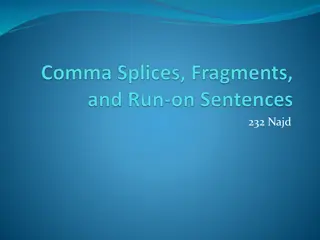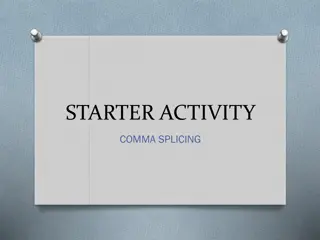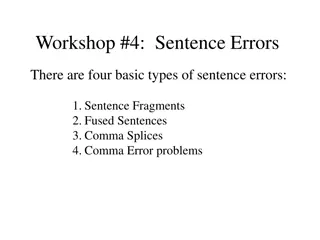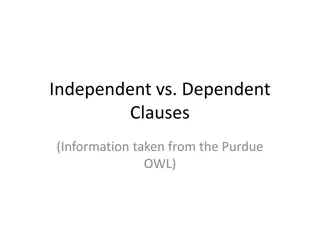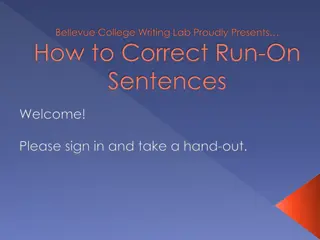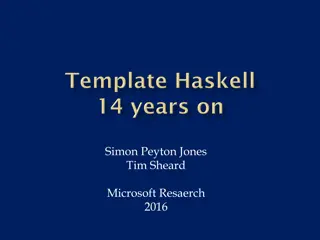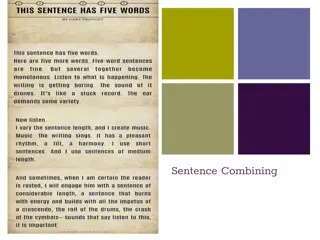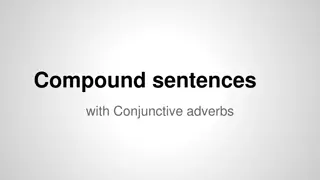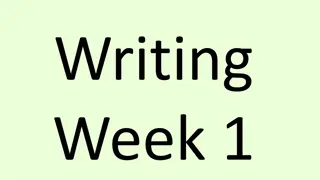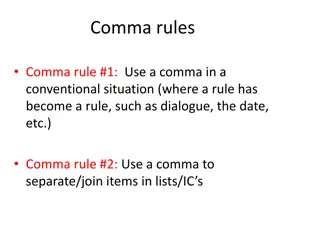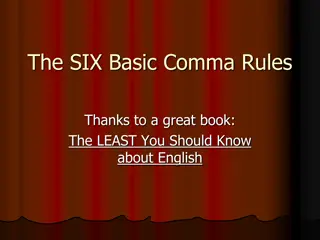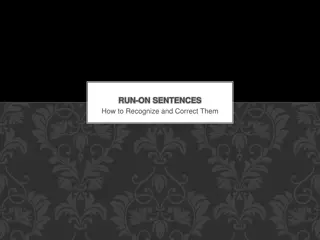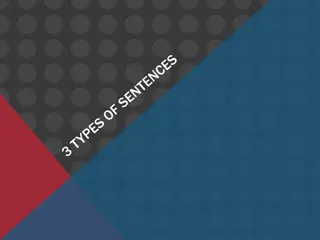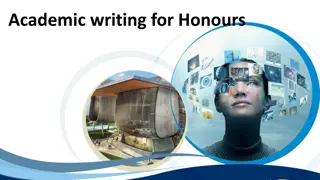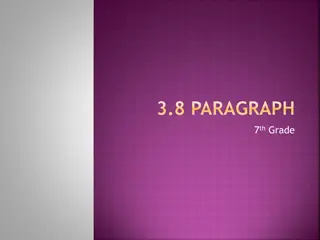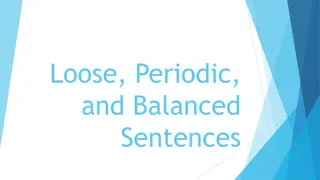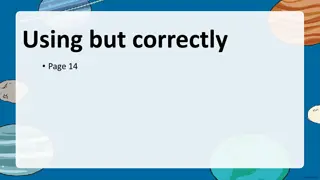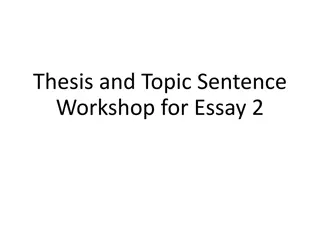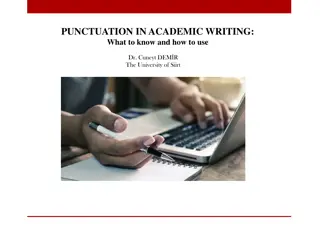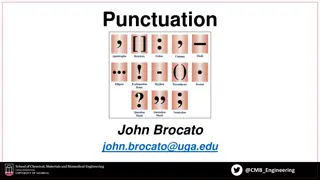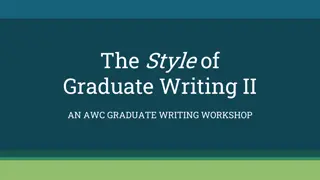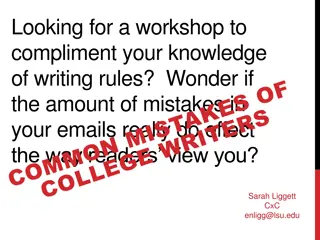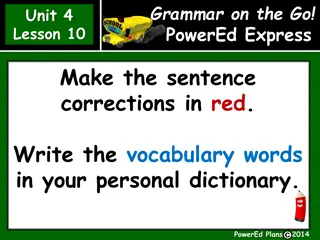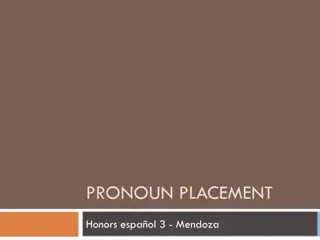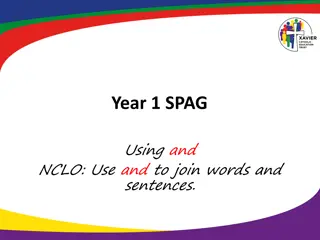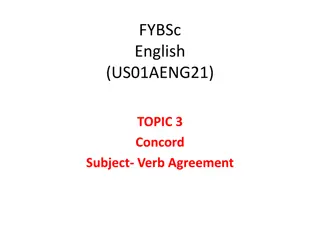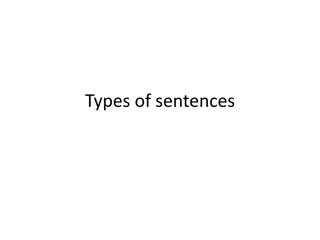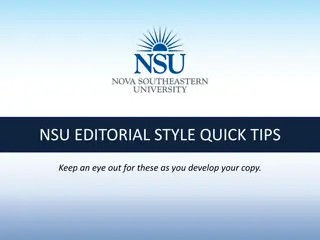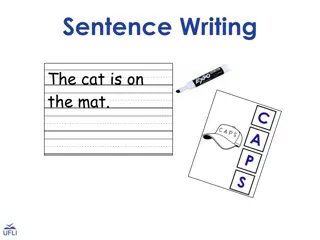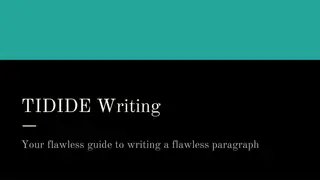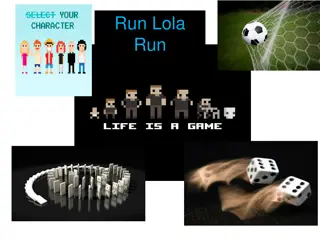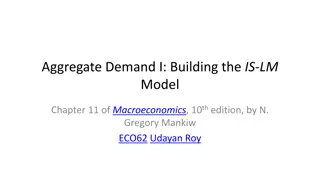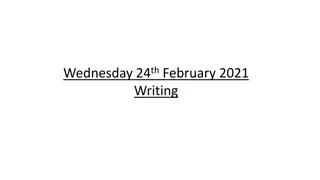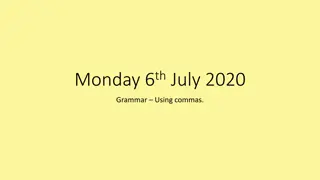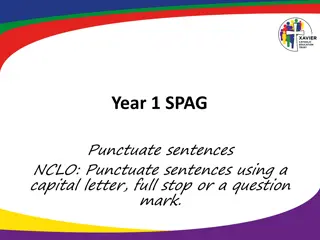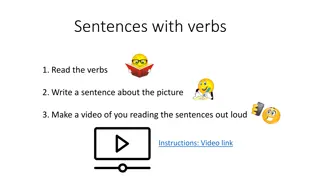Avoiding Comma Splices and Run-on Sentences in Writing
Learn how to identify and correct comma splices and run-on sentences in your writing. Understand the differences between them and discover effective punctuation techniques to ensure clear and concise sentences.
Download Presentation

Please find below an Image/Link to download the presentation.
The content on the website is provided AS IS for your information and personal use only. It may not be sold, licensed, or shared on other websites without obtaining consent from the author. Download presentation by click this link. If you encounter any issues during the download, it is possible that the publisher has removed the file from their server.
E N D
Presentation Transcript
Mini-Lesson #33 From the UWF Writing Lab s 101 Grammar Mini-Lessons Series
A comma splice occurs when only a comma separates the two complete sentences (independent clauses). A comma splice is not a comma error. A run-on occurs when two complete sentences are fused together without the proper punctuation.
The comma splice and the run-on/fused sentence are two sentence errors. A comma splice results when two independent clauses are joined solely by a comma. Example: I admired Wonder Woman, for a long time she was my hero.
A run-on is not a long sentence. Both the run-on and the comma splice can be two short sentences. A run-on/fused sentence, really two sentences without any punctuation, or conjunction between them, is identical to a comma splice but without the comma. Example: I admired Wonder Woman for a long time she was my hero.
A period or semicolon correctly marks the sentence boundaries. Coordinating conjunctions (and, but, or, nor, for, yet, and so) offer alternatives for connecting two sentences. (Use a comma preceding the coordinating conjunction.) Examples: I admired Wonder Woman. For a long time she was my hero. I admired Wonder Woman; For a long time she was my hero. I admired Wonder Woman, and for a long time she was my hero.
Comma Splice Examples: Incorrect: This company has never printed novels, textbooks are its principal publication. Correct: This company has never printed novels; textbooks are its principal publication. Incorrect: Wearing a seat belt is not just a good idea, it s the law. Correct: Wearing a seat belt is not just a good idea; it s the law.
Incorrect: Mrs. Webb listens to everyones opinions, then she makes up her own mind. Correct: Mrs. Webb listens to everyone s opinions; then she makes up her own mind. Incorrect: Difficult puzzles first cause amazement and thought, then they create a mood of frustration and anger. Correct: Difficult puzzles first cause amazement and thought; then they create a mood of frustration and anger.
Run-ons Examples: Incorrect: Psychohistory is a relatively new type of study it combines the insights of psychology with the data of history. Correct: Psychohistory is a relatively new type of study; it combines the insights of psychology with the data of history.
Incorrect: You is a second person pronoun rarely used in the South most Southerners use y all instead. Correct: You is a second person pronoun rarely used in the South; most Southerners use y all instead. Incorrect: Some television shows are no doubt are no doubt worthless however, there are many programs that can truly be called educational. Correct: Some television shows are no doubt are no doubt worthless; however, there are many programs that can truly be called educational.


